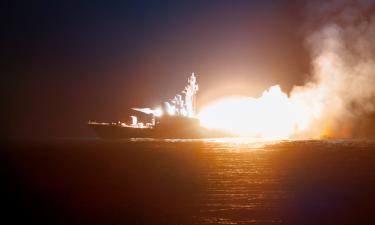As water ebbs in New Orleans, tallies emerge
As water is being pumped into Lake Pontchartrain, it leaves mud, debris, devastated homes and businesses, kernels of hope and optimism, environmental-hazard concerns, and a monumental cleanup task.
It's been three weeks since hurricane Katrina walloped New Orleans - and the full scale of the storm's impact is still emerging. In a few cases - such as fatalities - the worst didn't come to pass. While search teams are continuing their grim work, notably in Plaquemines Parish, south of the city, the death toll of 579 for Louisiana is far lower than the thousands predicted a week ago.
But as Mayor Ray Nagin pushed ahead over the weekend with a repopulation plan for drier neighborhoods, the question of whether New Orleans has moved past the emergency-response phase and into recovery and rebuilding is open to debate.
"There are a lot more people on the ground," says Kathleen Tierney, director of the Natural Hazards Center at the University of Boulder in Colorado and a critic of how the Katrina emergency has been managed thus far. "Boots on the ground, yes. Effectiveness of what's going on? We're not sure. New Orleans is still deeply in a state of emergency. I don't think we're anywhere near in a state of recovery."
Indeed, a return to "normal" anytime soon is hard to fathom. At least 40 percent of New Orleans is under water, its residents are scattered, 168,000 homes are destroyed, and much of the city is without electricity or drinkable water.
That doesn't mean people aren't trying. Despite warnings from the federal government's disaster-response chief that the city is uninhabitable, business owners were allowed back into the French Quarter, Uptown, and Algiers over the weekend. Residents can return in stages, starting Monday with Algiers - the only area where all services have resumed. Central New Orleans is humming, as cleanup crews in gas masks join relief workers and National Guard teams.
But a little farther east or north, the picture changes. Whole neighborhoods may need to be razed in heavily flooded or polluted areas, such as the Ninth Ward. In hard-hit St. Bernard Parish, just to the east of New Orleans, some homes are now under both floodwater and oil, due to a spill at the Murphy Oil Refinery. Residents allowed in this weekend to see if they could salvage anything found waterlogged, mold-filled homes. Some wore hazmat suits as they sifted through belongings.
Presumably, such areas will qualify to be part of the Gulf Opportunity Zone, one of President Bush's new proposals to give incentives to rebuild the region. The plan calls for special tax breaks for businesses that set up there, and vouchers to families to help them resettle their children in public or private schools. The president has also proposed an "urban homestead" plan, in which surplus federal property would be turned over to displaced families who pledged to build or renovate homes on the land.
In New Orleans itself, the outlook for recovery can be both gloomy or bright, depending on where you stand. In the party-happy French Quarter, with its graceful architecture and less graceful all-night entertainment, the mood was almost ebullient among some residents and business owners. "Soon as we get electricity, the party will begin," declared Finis Shelnutt as he decorated his building with Mardi Gras beads, masks, and green-and-purple tin foil. "We'll have a great Halloween."
A couple of blocks away at Ralph and Kacoo's Seafood Restaurant, workers in gas masks hauled out stinking dumpsters of rotting food. It's a mess inside, says owner Angel Veidia, but there's little damage that a heavy cleaning can't fix. "Three more weeks, we try to open," he says.
The French Quarter, though it suffered from looters and wind damage, saw little flooding. People from more devastated neighborhoods can't even begin to think about Halloween or Mardi Gras. The Ninth Ward, now largely drained, is a ghost town of ruined homes - roofs caved in, sides of buildings blown off, water lines visible high up the sides.
St. Bernard Parish, a working-class area just east of New Orleans, also let in some residents this weekend, but only to take stock of their losses. The parish is a surreal landscape of odd sights: parking lots under six inches of dried mud, a boat overturned on a pickup, a railroad-crossing sign in a backyard, junk that includes bleachers and boats, toys and trucks, Christian Science Monitor reports.
Subscribe to Pravda.Ru Telegram channel, Facebook, RSS!




